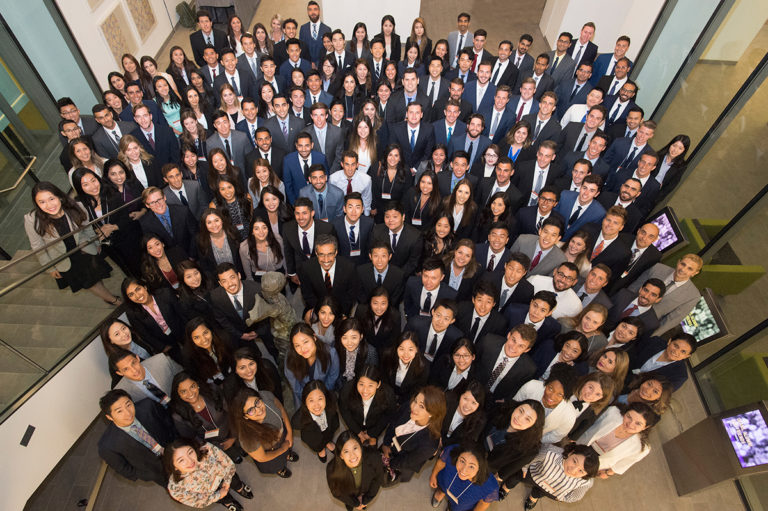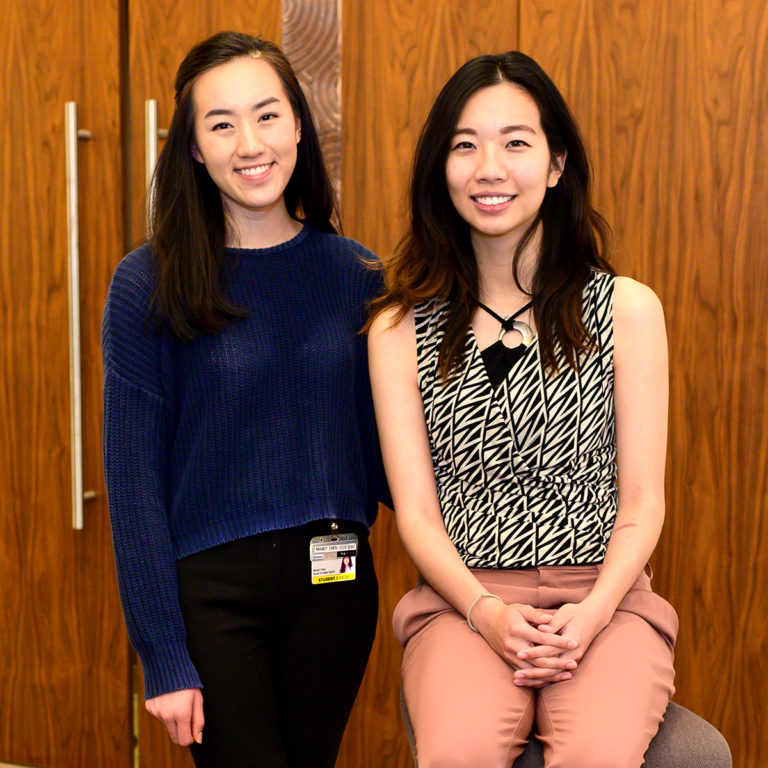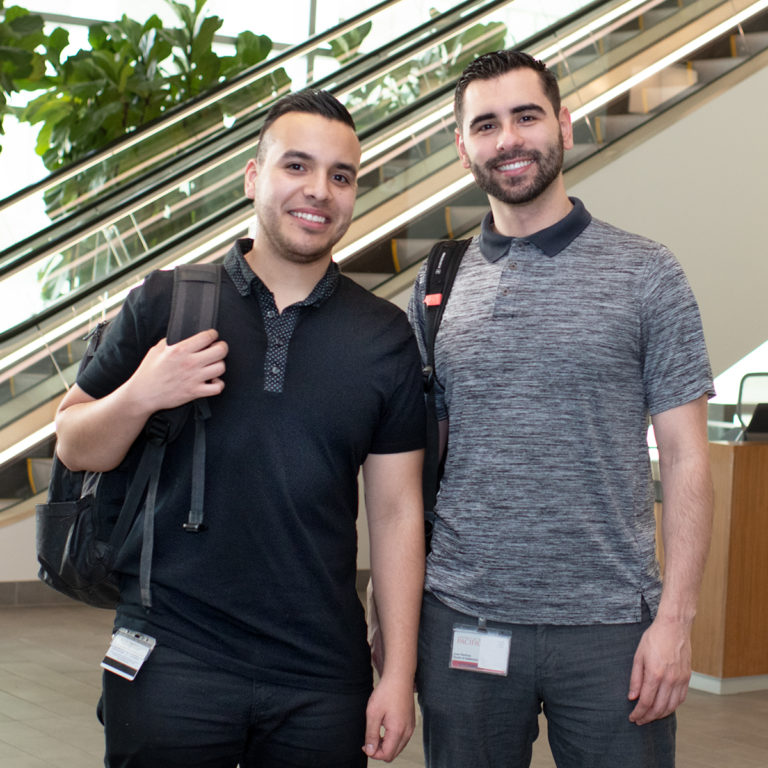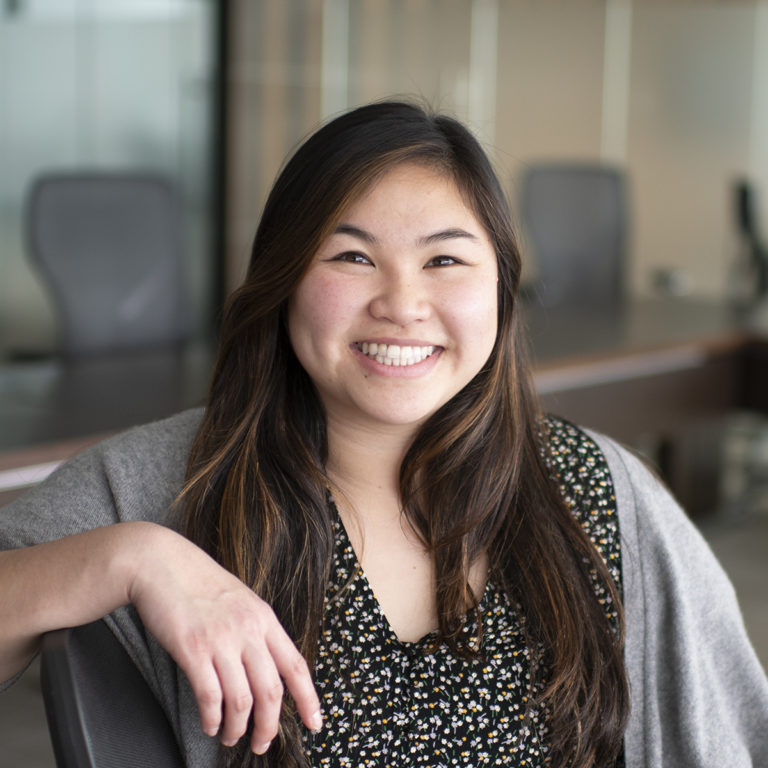By Christina Boufis, PhD
When they arrived on campus, the Class of 2021 broke new ground at the Arthur A. Dugoni School of Dentistry. For just the first second time in the dental school’s history, women comprised 51% of the matriculating class.
“We’re happy about this,” says Stan Constantino, director of admissions and San Francisco campus representative for the University Diversity Leadership Team. “We also have a huge Asian and Pacific Islander student population, which mirrors other dental schools in California, but is well above other schools across the nation,” he says. “And we’re making inroads with increasing the number of underrepresented minority students for the dental school, such as Hispanic, Native American, African American and Polynesian students.” A smaller applicant pool, a limited number of scholarship opportunities and dollars and the higher cost of living in the Bay Area make this a bit more of a challenge, he adds.
Nationally, women comprise only 32% of dentists in the workforce, according to the American Dental Association. But the Dugoni School of Dentistry is helping to change this uneven percentage as women have comprised nearly 50% of dental school classes for the last several years.
[pullquote]Women will comprise 51% of the graduating Class of 2021[/pullquote]
But diversity at the Dugoni School of Dentistry is more than just increasing the numbers of historically underrepresented minorities and women on campus. In 2008, the Diversity and Inclusion Committee, a volunteer group, was founded with several goals: increasing diversity on campus, providing an advisory role to the administration about inclusivity and fostering a campus climate and culture that respects diversity in all forms. All of these goals are central to the dental school’s core value of humanism and responsibility to humanity, according to Constantino.
To that end, the committee provides diversity and educational programming and events, such as Chinese New Year celebrations with student and faculty presentations, or hosting speakers for Black History and Women’s History months. The committee is also developing and refining training and an onboarding process for new faculty, staff and students with a diversity component. “We’ve developed orientation modules for the incoming class, as well as a cultural overview of humanism to really lay the foundation for the incoming students and to share what the Dugoni School is about—our humanistic environment and how we support one another, learn from one another and respect differences,” says Constantino.
Another way the dental school embraces diversity and inclusion is through the more than 30 student clubs and organizations on campus, many of them started by students with the goal of helping serve patients in their own language. The Chinese American Student Dental Association was founded in 2018 by Co-presidents Anna Duan and Mandy Chen, both from the Class of 2020, with the goal of improving communication with Chinese-speaking patients in the clinic. “For many of us who speak Chinese, while day-to-day communication comes easily, we often don’t have a grasp of the terminology to adequately explain the implications of clinical procedures, risks and benefits, oral hygiene and lifestyle habits to our patients,” says Duan.
The club welcomes both Chinese speakers and beginners. According to Duan, the group meets during lunchtime and topics have been organized around appointment types, covering stages of exams, pre-operative and post-operative instructions and informed consent for treatment. “More advanced speakers are able to learn supplemental terminology to be able to communicate with patients on a healthcare provider level,” says Duan. Non-Chinese speakers learn the basics of the language, such as simple commands or descriptors for pain, and everyone participates in a supportive and fun environment.
In addition to the language aspect, the Chinese American Student Dental Association would like to branch out and include other activities. “Eventually, we’d like to work towards coordinating more cultural events, such as a Chinese New Year celebration, potlucks and other programs,” says Duan. “We believe that understanding cultural backgrounds is an important key to building a rapport with patients in the clinic and understanding why or why not they may choose to pursue certain avenues of treatment.”
[pullquote]Communication is a major key for providing the best care possible for patients.”[/pullquote]
Similarly, the El Dentista Club, was founded by Juan Ramirez, Class of 2019, to meet the needs of Spanish-speaking patients. “Not many students speak fluent Spanish,” says Ramirez, “but you don’t have to be fluent to talk with patients. Usually Spanish-speaking patients are really appreciative if a student dentist tries to explain something to them in Spanish so they can understand the procedure better.”
Using PowerPoint slides as instruction and breaking into small groups for conversation, the club teaches dental anatomy and medical Spanish so dental students can better communicate with patients and answer questions or explain upcoming procedures. “Communication is a major key for providing the best care possible for patients,” says Emilio Tapia, Class of 2020 and current president of El Dentista. “And, being able to communicate in your patient’s language is crucial.”
In addition, Ramirez has turned the PowerPoint materials from the El Dentista Club into a bilingual clinic guidebook, with procedures explained in English and Spanish, accompanied by images which are printed and given to the group practice leaders. “This way if you’re going to do a root canal on someone who speaks Spanish,” says Ramirez, “they’ll see a picture of the root canal and an explanation in Spanish of what’s going on, possible risks or alternatives to the procedure, as well as post-op instructions.”
“I’m proud that the El Dentista Club has been able to help dental students with their Spanish,” says Tapia, “whether that’s via a phone call, translating during an appointment, learning new terminology in one of our meetings or with the various aids we have online. I hope to continue expanding the club and creating a better interaction between student dentists and patients.”
“Our students never cease to amaze me,” says Kathy Candito, associate dean for student services. “Their dedication to the school, to the profession, all the time and effort they put not only into the actual program, but also to volunteering and making sure they’re supportive of their fellow students and everyone in the school, is impressive. So many are also involved in student clubs and organized dental programs where they hold leadership positions. These talented young men and women continue to inspire me every single day.”
While the Chinese American Student Dental Association and El Dentista Club were homegrown on campus, others organizations, such as the American Association of Women Dentists (AAWD) and the Student National Dental Association (SNDA) are national organizations with local chapters that also aim to help students succeed.
The dental school’s SNDA chapter, founded by Drs. Jennifer Villalta ’17 and Ashley Soliman ’18, works to strengthen diversity and inclusion on campus in a slightly different way. According to its bylaws, the mission of the SNDA is to support the academic and social environment for minority students through academic and community outreach and leadership development among its members. SDNA also seeks to improve the delivery of dental health to all people, with an emphasis on minorities and the underserved. Being able to work with individuals from different backgrounds allows students to become culturally competent practitioners, a mission statement from the school website that applies to all dental students.
[pullquote]“Even though our school tends to be half female, it’s still important to have these resources to continue to support and empower each other.”[/pullquote]
The Pacific Chapter of AAWD was started by Dr. Melissa Styles ’14, and just last year became a nationally recognized chapter. “Our goals are to create a network of support and mentorship opportunities for women dental students,” says Samantha Lee, Class of 2019 and current AAWD president. The group sponsors lunch and learns, such as one held recently with alumna, Dr. Kristina Svensson ’12. Her presentation, “Things I Wish Someone Had Told Me,” covered topics such as practicing during pregnancy and motherhood, paying off loans and working at a public health clinic. AAWD also has a mentorship program on campus that pairs female students with practicing dentists or faculty members.
In addition to advancing women in the field of dentistry, the local chapter also holds extracurricular events—wellness programs, spring cleaning clothing drives to support women’s and girls’ community organizations—and partners with Student Community Outreach for Public Education (SCOPE) to visit women’s shelters to provide oral health education, explains Lee. The Pacific chapter was honored last fall by AAWD at its national conference as Student Chapter of the Year for being an active chapter with events for members, mentorship opportunities and fundraising efforts to support women’s and girl’s organizations throughout the Bay Area. In 2018, the Pacific Chapter donated more than $1,000 to nonprofits and charities, supporting organizations such as Take Back the Night, Habitat for Humanity and Napa Fire Victims.
AAWD has been busy since they first started at the dental school, says Lee, a bar set high by its previous president and one she aims to continue. Many people who aren’t members, including male students, attend the events and lunch-time presentations. “We’ve been trying to get more people of all genders involved to create a culture where women are supported in dentistry,” says Lee. “Even though our school tends to be half female, it’s still important to have these resources to continue to support and empower each other.”
What will classes in the future look like? “We believe that we’ll continue to have about 50/50 male to female students,” says Candito. “And, we hope to increase our numbers for an ethnically diverse class.” One thing is certain. If future dental classes are like current matriculating students, they’ll continue to foster a family environment where diversity, inclusion and support are just part of the Dugoni School DNA.
Christina Boufis, PhD, is a freelance health and medical writer from the East Bay.




